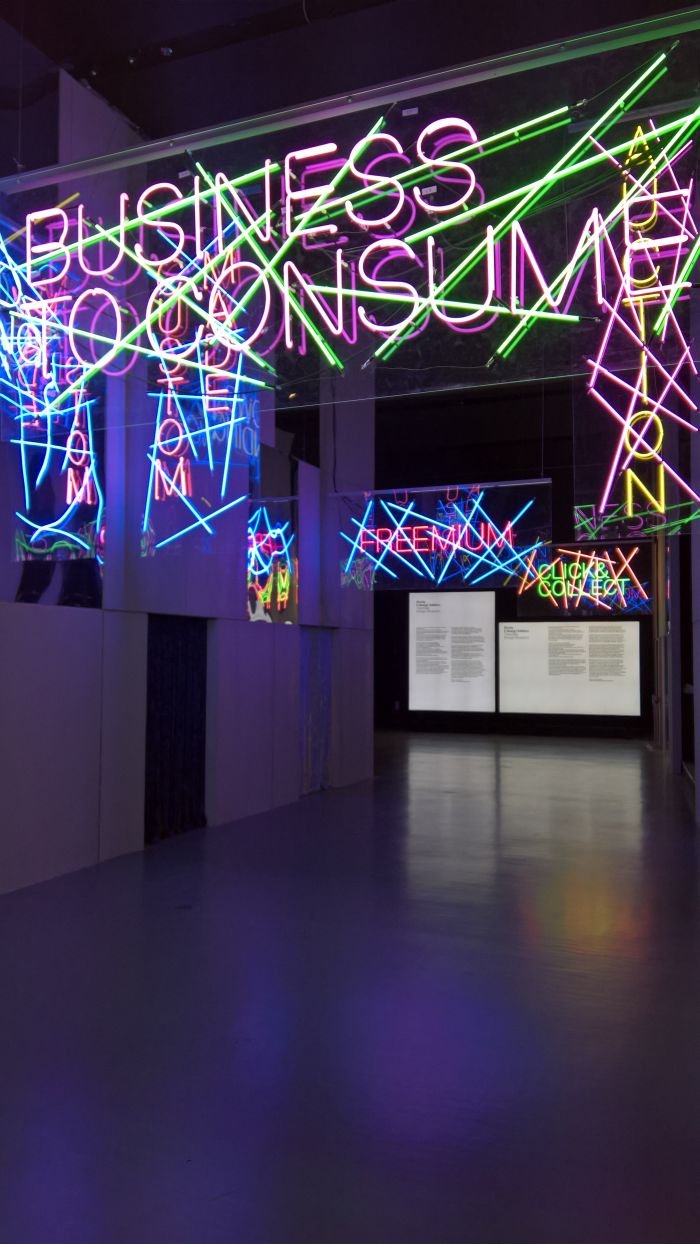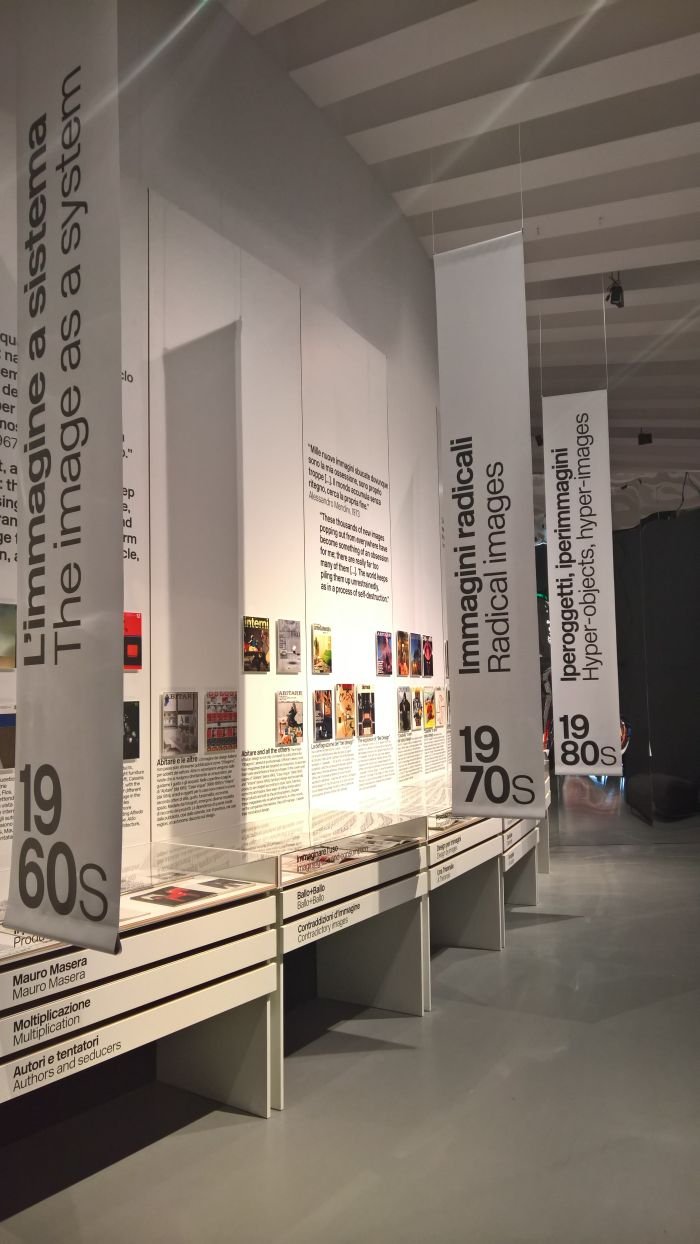Any anthology of 20th century design would by necessity feature a very, very long chapter on Italy. With Storie. Il Design Italiano the Triennale Design Museum Milan sketch out how the narrative of such a chapter could develop, highlight key moments in the plot development and introduce the most important protagonists.
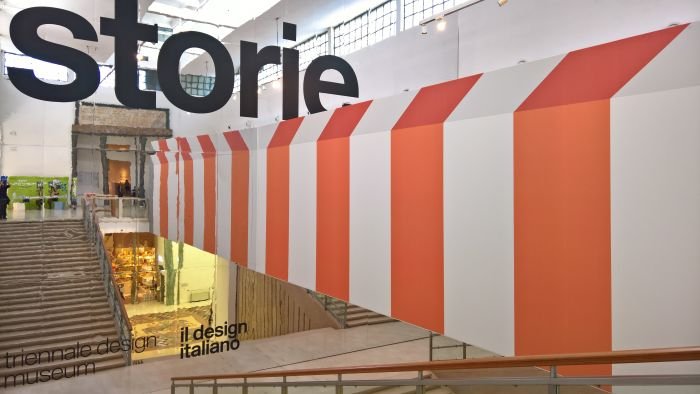
Established in 2007 the Triennale Design Museum reorganises its permanent exhibition on an annual basis, each reorganisation changing the focus of the presentation to illuminate another perspective on Italian design: since 2007's inaugural The Seven Obsessions of Italian Design the Triennale Design Museum has presented exhibitions as varied as Italian Design Beyond the Crisis Autarky, Austerity, Autonomy, W. Women in Italian Design, or Grafica Italiana.
With their 11th edition, Storie. Il Design Italiano, the Triennale Design Museum explore the development of design in Italy throughout the course of the 20th century, begin however, somewhat paradoxically, in the future.
Or perhaps better put, Storie. Il Design Italiano opens with Pay per Design a presentation exploring how aspects of the contemporary design industry may/could/should evolve to become our future design industry. Focussing on production, sales and distribution models such as crowdfunding, open source, designer-producers and the possibilities inherent in combining virtual online with physical offline marketplaces, the curators describe Pay per Design as a presentation which although of models still, generally, untested and/or experimental on a large scale, indicates a general move towards an industry in which "who" and "what" are replaced by "how" and "why". And it largely is, largely is a description of a much fairer and more responsible industry, to a more responsive future, one more respectful of both consumers and designers, and one in which the social, environmental and humane dominate; although as recent history teaches us, such positive outlooks tend to cloud over the moment global capital discovers that there could be profit in a system, turning utopia into dystopia. Guarding against that, ensuring understandings of the "how" and "why" remain social, environmental and humane rather than egoistic and economic is, as we've oft noted, one of the major challenges for contemporary society, a challenge we all have a responsibility to consider. And a challenge which, until now, we have singularly failed to master. But it's not too late.
That the responsibility of mastering such challenges lies with society as a whole is relatively new, indicative of how society is evolving, previously it was the responsibility of a small number of individuals, including architects and designers: how Italian designers and architects responded to the challenges of the 20th century forms the central thread of Storie. Il Design Italiano.
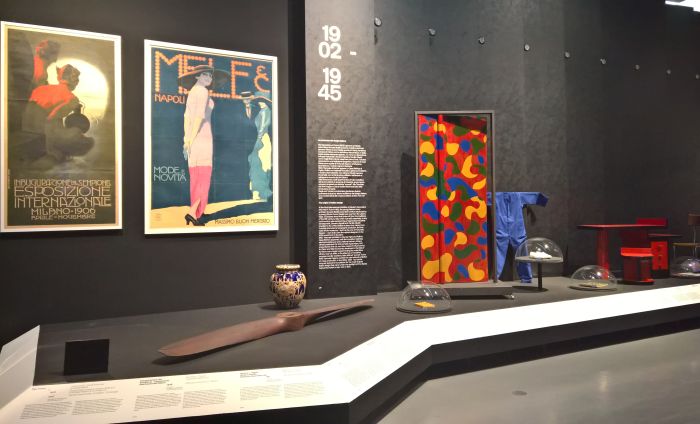
Dividing the 20th century into five chapters Storie. Il Design Italiano opens in Turin at the 1902 Prima Esposizione Internazionale d'Arte Decorativa Moderna, an event which in addition to contributions from leading Italian creatives presented works by the likes of Peter Behrens, Henry van de Velde, Joseph Maria Olbrich and Charles Rennie Mackintosh, and as such was not only one of the key moments in the development of European Art Nouveau, but both exposed Italian creatives to what their counterparts were doing and also confirmed that Italian creatives were part of the new, reformist, movement, thus promoting and encouraging further development in Italian architecture and design.
Further development that, as elsewhere, was hindered by the political and economic tensions that dominated European society in the first half of the twentieth century, tensions accompanied by numerous national and international crises, and for all by the two wars. Consequently, the first of the exhibition's five chapters stretches for almost half the book, from 1902 until 1945, a period where instability made progress sporadic but which nonetheless was a period which saw the development of industrialisation in Italy, a period which saw the establishment of companies such as Olivetti and FIAT who set new, international, standards, a period which saw the rise of Futurismo as a younger generation sought a new way forward, and a period that ultimately saw Futurismo cede to Fascismo.
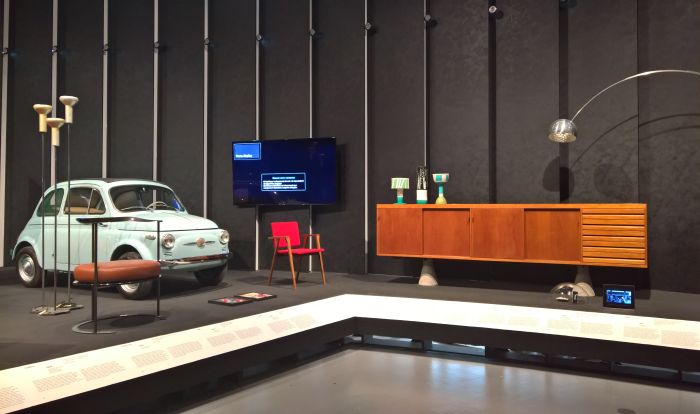
If the timescale represented in the first chapter is indicative of the problems of that period, then the timescale represented by shortest chapters, the eight years from 1964-1972, followed by the decade to 1983, can be considered indicative of the fact that the 60s and 70s represent the period when design in Italy was, arguably, at its most relevant, exciting and original, when design was developing faster than designers could keep up. When, as it were, its narrative was most engaging.
Which isn't to say that the periods before and after the 60s and 70s weren't without their relevance, just that they were differently relevant, the period represented in Storie. Il Design Italiano by the years 1946-1963, for example, being relevant in context of Italian designers and architects discovering their voices.
Arguably amongst the European nations Italy took longest to recover from the Second World War, took the longest to rediscover its industrial and economic feet, however by the late 1950s was catching up with, and preparing to overtake, much of the continent.
In terms of architecture and design that recovery was facilitated by the likes of, and amongst many others, Osvaldo Borsani, Franco Albini, Achille & Pier Giacomo Castiglioni or Ettore Sottsass, ably assisted by manufacturers such as Azucena, Poltronova, Cassina, Kartell, Artemide, Flos, et al, who proved themselves not only open to the ideas of the, largely, young designers but also very aware of the current global technological and social revolutions and the need to respond them. Thus by the middle of the 1960s Italy had become one of the most important centres for contemporary design, and by 1972 when the MoMA New York staged the exhibition Italy: The New Domestic Landscape, not only had Italy become a byword for intelligent, high-quality, innovative, if at times combative, contemporary design, but designers such as Joe Colombo, Mario Bellini, Gaetano Pesce or Enzo Mari household names.
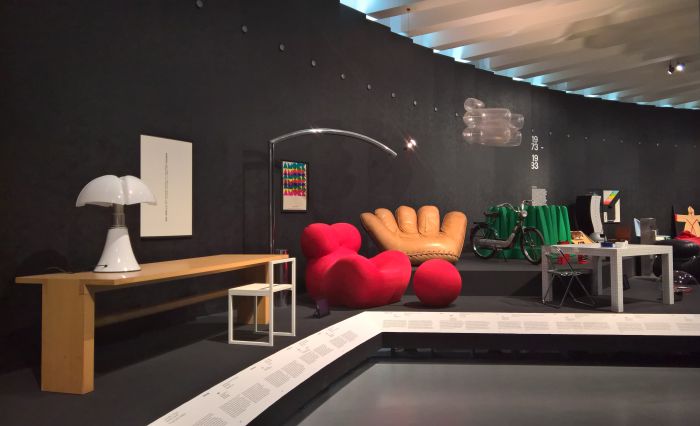
If the decades before the 1960s were one of Italy finding its voice, and the 60s and 70s that voice being used to compose an engaging narrative, what does that mean for the years since? Observant readers will understand when we note that the last chapter of Storie. Il Design Italiano covers the decade and a half from 1984 until the close of the exhibition in 1998.
The opening of the inaugural Memphis exhibition in Milan on September 18th 1981, marked not only a conclusion of a discourse within Italian architecture and design that had developed through the 1960s and 70s, but arguably was also the last great Italian moment in design.
Not that we are writing off Italian designers or design from Italy since 1981, we're not arguing Italy became irrelevant, we'd never do that, and the presence in the exhibition of post-1985 works by the likes of Alberto Meda, Antonio Citterio, Piero Lissoni or Memphis alumnus Michele de Lucchi indicating that to do such would be foolhardy to the point of delinquency; however, it is to argue that the increasing global nature of society, the increasing global nature of trade, the increasing economic relevance of design as a commodity, and the associated increase in the global "design" market since the 1980s meant that previous, moot, notions of "national" design became increasingly unsustainable.
Whereas in 1902 national, vernacular, peculiarities could be detected amongst the conceptually similar projects on show at the Turin exhibition, and while the Radicals of the 1960s, though not unique in a Europe of turmoil and revolt, did dissent in an Italian accent, as the second half of the 20th century progressed the increasing mixing of influences, increasing understandings of the global nature of society and increasing mobility of designers negated ideas of design being rooted in one nation, and by the first decades of the 21st century design had become truly global. Alone marketeers and national trade commissions continue to fly the banner of Italian/Danish/French/Dutch/Martian design, banners as unhelpful as they are questionable.
It is, we suspect, therefore no coincidence that among the last objects one meets in Storie. Il Design Italiano are the Vermelha Chair by the Brazilian brothers Fernando and Humberto Campana for Edra and the Thinking Man's Chair by London's Jasper Morrison for Cappellini. Nor is it coincidence that at the 2018 Milan Furniture Fair the most interesting and engaging products from Italian manufacturers were by designers from France, Germany, Japan, England ... and Italy.
Similarly, through ending the presentation in 1998 the curators aren't signalling any demise of design in Italy, much more the decision to end the presentation in 1998 was taken because of the difficulties in assessing the relevance and importance of contemporary design in and from Italy while it is still evolving, while the relevance and importance of the new protagonists, influences and contexts are still to be determined, while, if you will, the story is still being penned. One must wait until the ink is dry and one can reflect with the benefit of distance. Which does of course bode very well for the Triennale Design Museum's 2050 exhibition.
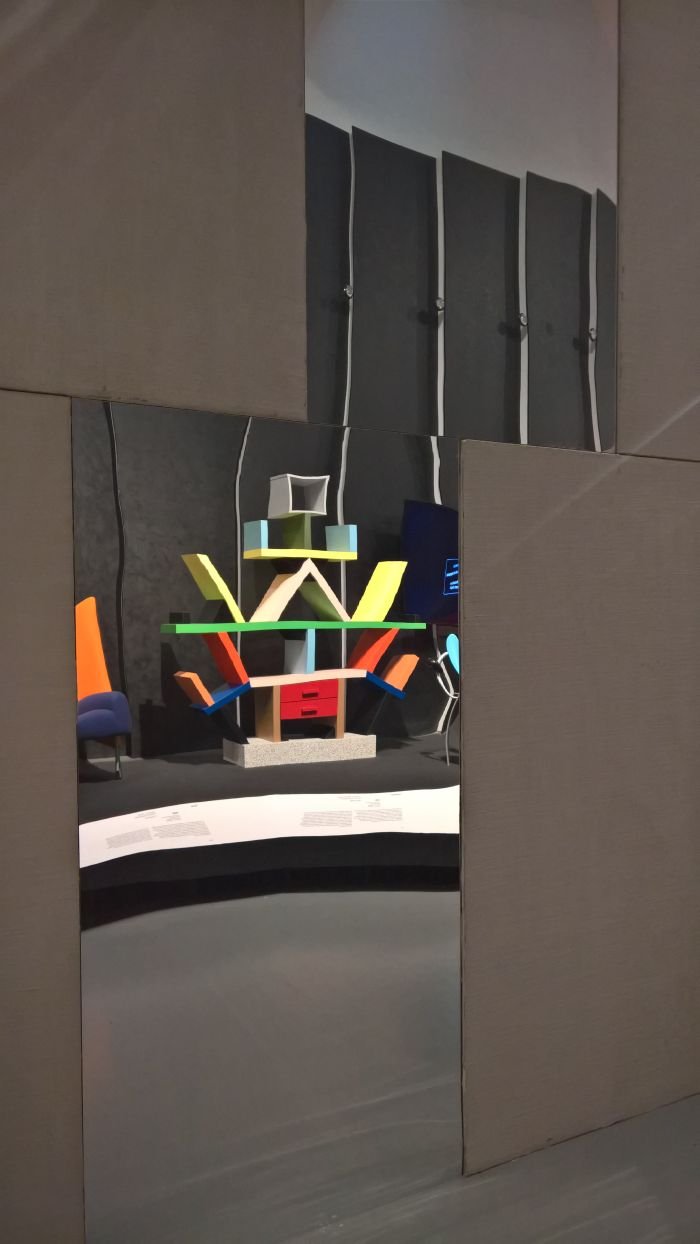
Complimenting the chronological tale are five detailed explorations of specific sub-plots within the story of 20th century design in Italy: Politics, which explores the political and social contexts in which the Milan Triennale has occurred, from the fascism of the 1933 event over the Radicals of the 60s and onto the globalisation of more recent years, and the inevitable consequences for the event; Geography, which highlights the various Italian regions and their manufacturers; Economics with its focus on the bottom line(s); Technology, which explores how Italian designers and manufactures have responded to changing technological realities of the 20th century, for all telecommunications, but also materials; and Communication, which highlights the importance of Italian architecture and design magazines, authors and photographers in disseminating Italian design to a national and global audience.
Providing for the briefest of overviews of a century of design from Italy Storie. Il Design Italiano not only explains the context in which the developments and evolutions design in Italy underwent in the course of the 20th century occurred, but also very nicely underscores the contributions Italian designers and architects have made to contemporary understandings of design, how they have influenced global design, but also how they have been been influenced from outwith, and how this two-way flow of influences, conditions, realities and constraints has helped shape contemporary design in Italy. From 1902 until 1998.
In no sense a comprehensive story of Italian design, for that the Triennale Design Museum simply lacks the space, Storie. Il Design Italiano is much more an anthology of short stories, but a highly entertaining, informative and compelling read nonetheless.
Storie. Il Design Italiano runs at the Triennale Design Museum, Palazzo della Triennale, Viale Alemagna,6, 20121 Milan until Sunday January 22nd
Full details can be found at www.triennale.org
